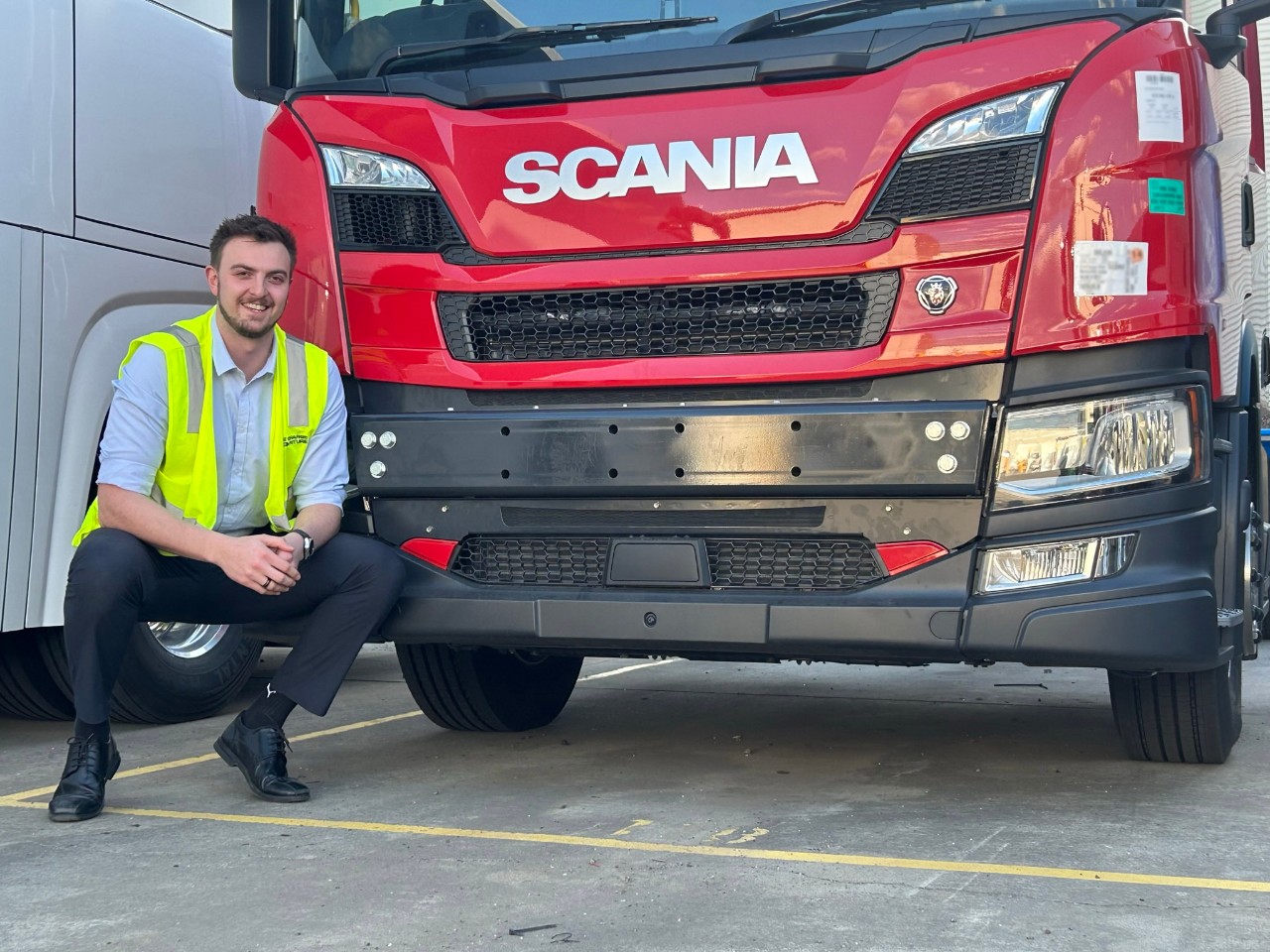
Scania raises the bar for emergency services vehicles
Scania Australia Presales Engineer Dean van Lunenburg has developed a local solution for a heavy-duty winch mounting bar for the new generation of Scania trucks.
The newly engineered Front Mounted Equipment Structure was designed in order to meet the pressing needs of local Australian emergency services for a winch mount bar for their Scania response vehicles that is strong enough for local application and which bolts directly into the front chassis crossmember.
The new FMES will be used by Fire and Ambulance services’ Scania trucks, with several units already ordered and fitted to fire truck CrewCab chassis that have arrived in to the country for local bodybuilding.
“The FMES is designed to be used in a variety of applications from winches to snow ploughs, and bolts straight into the bull bar attachment points,” Dean says.
William Fisher, Director of Presales and Logistics at Scania Australia says he is very proud of the work Dean has done, leading the project to bring the FMES project to fruition.
“This is an exceptional display of ingenuity and dedication,” he says. “It took Dean several months of meticulous effort, working with internal and external partners to create this solution, demanded by our customers.
“Dean conceptualised and built a FMES that seamlessly integrates with the Scania chassis design. It was designed from scratch in 3D CAD, and Dean tested the structure using finite element analysis to ensure the structure’s design suited the requires operational parameters our customers requested,” William says.
Scania Australia called on the services of one of the global company’s trusted partners to assist in the testing and validation of the design and materials, as well as tapping a local existing supplier for the manufacture of the bar.
“Engineering research work was carried out by L&T Technology Services, an Indian multinational technology company,” Dean explains. “L&T created development concepts and carried out finite element analysis (stress testing, vibration testing, and adding or altering components to meet strength requirements). Once the design met all acceptable criteria, they provided engineering drawings and CAD models of the new product.
“When we signed off the final drawings we sent the files to our preferred local supplier, Diver Consolidated Industries, based in Reservoir, Melbourne,” he says.
“DCI specialises in heat shields, metal pressings and welded assemblies at large scale, and they already make a number of fittings for our vehicles sold in Australia. They manufacture and assemble the FMES bar and supply them to us for fitment at our Scania new vehicle preparation workshops.”
Dean joined Scania in 2022 as a Graduate Engineer, having completed an honours degree at Victoria University in 2019.
“This is just one real world example of how Scania in Australia is able to offer talented graduates the ability to design from an idea, a solution that meets the needs of our customers, and shepherd it from inspiration to a production reality,” William says.